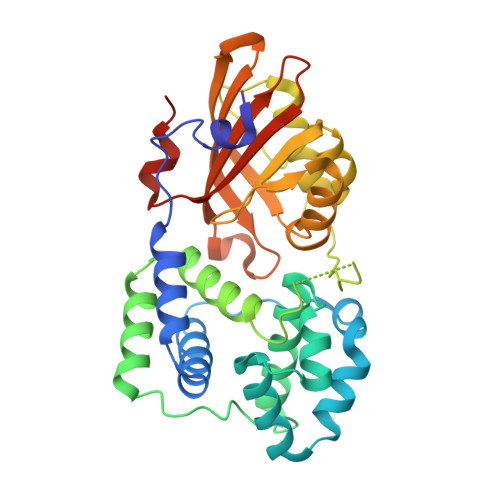Functional specialization of expanded orange carotenoid protein paralogs in subaerial Nostoc species.
Yang, Y.W., Liu, K., Huang, D., Yu, C., Chen, S.Z., Chen, M., Qiu, B.S.(2023) Plant Physiol 192: 2640-2655
- PubMed: 37070859
- DOI: https://doi.org/10.1093/plphys/kiad234
- Primary Citation of Related Structures:
7YTF, 7YTH - PubMed Abstract:
Orange carotenoid protein (OCP) is a photoactive protein that participates in the photoprotection of cyanobacteria. There are 2 full-length OCP proteins, 4 N-terminal paralogs (helical carotenoid protein [HCP]), and 1 C-terminal domain-like carotenoid protein (CCP) found in Nostoc flagelliforme, a desert cyanobacterium. All HCPs (HCP1 to 3 and HCP6) from N. flagelliforme demonstrated their excellent singlet oxygen quenching activities, in which HCP2 was the strongest singlet oxygen quencher compared with others. Two OCPs, OCPx1 and OCPx2, were not involved in singlet oxygen scavenging; instead, they functioned as phycobilisome fluorescence quenchers. The fast-acting OCPx1 showed more effective photoactivation and stronger phycobilisome fluorescence quenching compared with OCPx2, which behaved differently from all reported OCP paralogs. The resolved crystal structure and mutant analysis revealed that Trp111 and Met125 play essential roles in OCPx2, which is dominant and long acting. The resolved crystal structure of OCPx2 is maintained in a monomer state and showed more flexible regulation in energy quenching activities compared with the packed oligomer of OCPx1. The recombinant apo-CCP obtained the carotenoid pigment from holo-HCPs and holo-OCPx1 of N. flagelliforme. No such carotenoid transferring processes were observed between apo-CCP and holo-OCPx2. The close phylogenetic relationship of OCP paralogs from subaerial Nostoc species indicates an adaptive evolution toward development of photoprotection: protecting cellular metabolism against singlet oxygen damage using HCPs and against excess energy captured by active phycobilisomes using 2 different working modes of OCPx.
Organizational Affiliation:
School of Life Sciences, and Hubei Key Laboratory of Genetic Regulation and Integrative Biology, Central China Normal University, Wuhan, Hubei 430079, China.















